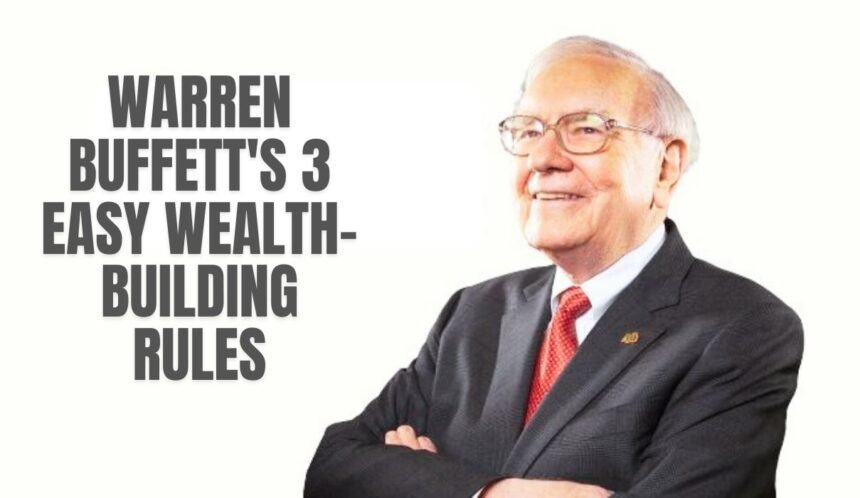Warren Buffett wasn’t born a billionaire. His enormous $116 billion net worth today was accumulated over decades of patient investing, following a few straightforward principles.
At Berkshire Hathaway’s annual shareholder meeting in 1999, when asked how to make $30 billion, Buffett laid out his wealth-creation philosophy in simple terms that any investor could apply.
Start Young and Let Time Work Its Magic
The first key tenet Buffett swears by is to start young. He believes the earlier you begin investing, the more wealth you can build thanks to the power of compound interest.
“We started with a little snowball on top of a very tall hill,” Buffett explained. “We started at a very early age in rolling the snowball down, and of course, the nature of compound interest is that it behaves like a snowball.”
Buffett bought his first shares when he was just 11 years old. Now 93, he is still actively investing and expanding his empire. In fact, he accumulated the majority of his billions after 65. In 1999, Buffett was ‘only’ worth $30 billion. Today that figure is nearly $116 billion.
Clearly, time is the most valuable asset in investing. The longer your money stays invested, the more it can grow exponentially through the effect of compounding. Beginning early maximizes this powerful wealth driver.
Focus on Small, Overlooked Companies
Buffett’s second piece of advice was to search out small companies, specifically micro-caps, if starting today with $10,000.
“I probably would be focusing on smaller companies because I would be working with smaller sums and there’s more chance that something is overlooked in that arena,” said Buffett.
In his early days, Buffett targeted extremely small, under-the-radar companies. He snapped up a tiny furniture retailer in Nebraska as it was crossing state lines in 1983. And he acquired See’s Candies when it had only $4 million in profits in 1972.
The small size of these companies meant they were ignored by most investors and had substantial room for expansion. Buying them cheaply allowed Buffett to ride their growth trajectory over decades.
The same logic applies today. Due to lower liquidity and analyst coverage, small caps tend to be priced 30% cheaper than their larger counterparts. Yet historically they have posted better returns over the long run, especially coming off market lows.
Diversifying into overlooked small caps could pay off handsomely for investors who keep a long horizon.
Stick To What You Know
The final pillar in Buffett’s wealth framework is staying inside one’s “circle of competency” when picking stocks.
Legendary IBM founder Tom Watson Sr. once advised, “I’m no genius. I’m smart in spots — but I stay around those spots.” Buffett applies the same specialized approach, focusing his holdings on either straightforward consumer brands or financial firms.
The billionaire emphasizes avoiding overly complex businesses you don’t properly grasp. Speculating without deep understanding multiplies investing risk. Maintaining a tight focus reduces missteps.
Ordinary investors should also play to their knowledge sweet spots when choosing stocks rather than overreaching. Specializing in a particular domain naturally builds an analytical edge. Combining expertise with patience is the essence of Buffett’s strategy that any small investor can replicate on a smaller scale.
Key Takeaways: Time and Knowledge Are Key
In the end, Buffett’s simplified formula for amassing his mammoth fortune boils down to:
- 1) Harnessing the might of compound interest by starting young
- 2) Targeting neglected small companies with room to expand
- 3) Never investing in businesses you don’t thoroughly comprehend
Featuring the legendary trader’s maxims for prosperity, the annual Berkshire Hathaway shareholder gathering has become a latter-day mecca for value investors.
Though Buffett’s shoes may seem unattainable to fill, his basic principles around time, size, and circle of competence can in fact be adapted by any investor, even on a small scale.
Buffett himself didn’t become the world’s sixth-richest person overnight. His vast wealth today simply represents the money snowball effect of spotting the right small stocks early and sticking with them for the very long run.
Ultimately, the Oracle of Omaha’s strategy symbols practicing patience rather than brilliance. His secrets reflect eternal investing truths more than business sorcery.
Any middle-class investor willing to start young, buy small, and focus their knowledge can set their own Buffett-style flywheel in motion. Capturing just an ounce of his returns magic over decades could beat the markets decisively.
Though making a $30 billion fortune remains a fantasy for most, with the right temperament and perspective, we can all become micro-millionaires in training.





